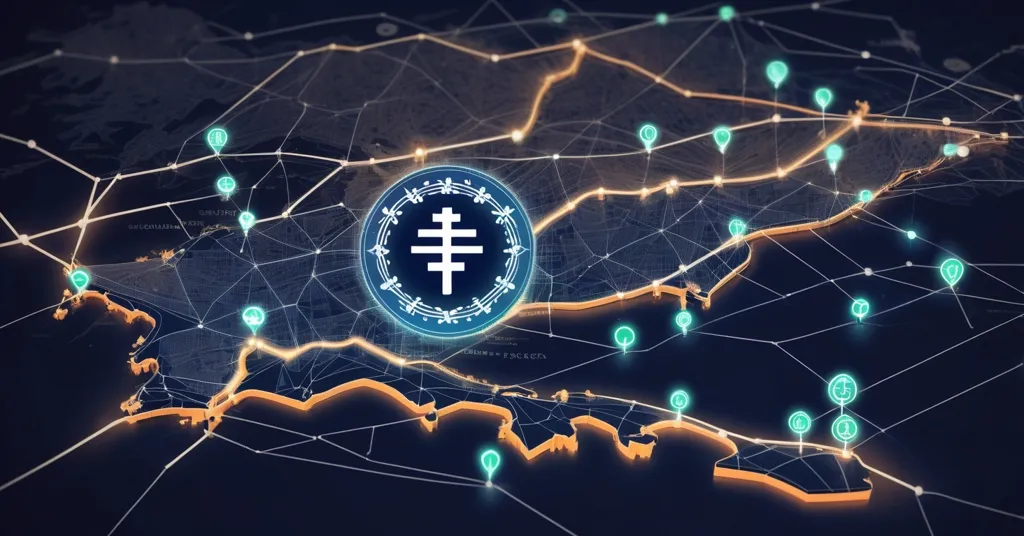USDC Launches in Japan: Circle and SBI Partnership Marks Web3 Milestone

USDC Launches in Japan Through Circle and SBI Partnership, Marking Web3 Milestone
Is Japan about to become the epicenter of the stablecoin revolution? On March 26, USD Coin (USDC), the world’s second-largest stablecoin, is set to launch in Japan through a strategic partnership between Circle and SBI Holdings. This move, approved by Japan’s Financial Services Agency (JFSA), not only signifies a major step forward for Japan’s blockchain ecosystem but also underscores the country’s progressive stance on Web3 technologies.
- USDC launches in Japan on March 26
- Partnership between Circle and SBI Holdings
- Approved by Japan’s Financial Services Agency
- USDC’s market cap at $59.7 billion
- Asia-Pacific region leads in digital currency transactions
- Circle’s partnership with GCash in the Philippines
- Japan positions itself as a hub for digital payments
Let’s dive into why this matters. USDC, issued by Circle, is a stablecoin pegged to the US dollar, offering a stable and reliable digital currency option for users. With a market cap of approximately $59.7 billion, it’s no small player in the crypto world. Circle’s partnership with SBI Holdings, a Japanese financial conglomerate, is key to bringing USDC to Japan. SBI Holdings, led by CEO Yoshitaka Kitao, aims to enhance financial accessibility and drive digital asset innovation in the country.
Web3, if you’re new to the term, refers to the next generation of the internet, built on blockchain technology for decentralization and user control. Japan has been a trailblazer in this space, and the launch of USDC is a testament to their forward-thinking approach. The JFSA’s approval under its electronic payments framework is a clear sign of Japan’s commitment to fostering a regulated environment for digital assets.
The Importance of Japan’s Regulatory Approval
Japan’s history with cryptocurrencies has been progressive. From being one of the first countries to recognize Bitcoin as a legal payment method in 2017 to now approving stablecoins like USDC, Japan is paving the way for digital finance. The JFSA’s stablecoin regulatory framework, introduced after two years of negotiations, allows for the listing of stablecoins, reflecting Japan’s clear rules and regulations.
Jeremy Allaire, CEO of Circle, praised Japan’s regulatory clarity, stating,
“Japan has long led the way in Web3 and blockchain, and their clear rules have made this launch possible.”
This sentiment is shared by Yoshitaka Kitao, who sees the partnership as a step towards enhancing financial accessibility. He noted,
“We believe this initiative will enhance financial accessibility and drive digital asset innovation, aligning with our vision for blockchain-based finance in Japan.”
Impact on the Global Stablecoin Market
The launch of USDC in Japan isn’t just a local affair; it has significant implications for the global stablecoin market. As USDC expands its footprint, it reinforces its position as a key player in the regulated crypto economy. Japan’s move could set a precedent for other countries in the Asia-Pacific region, potentially influencing more widespread adoption of stablecoins.
Circle plans to list USDC on additional Japanese exchanges like Binance Japan, bitbank, and bitFlyer, further enhancing its presence. This expansion could lead to increased adoption of stablecoins for both domestic and international transactions, especially considering Japan’s high average transaction value for digital remittances, which stood at $66.3 thousand per transaction in 2023.
The Asia-Pacific Region’s Role in Digital Currencies
The Asia-Pacific region is at the forefront of the digital currency revolution, accounting for 29% of global digital currency transaction volume. Circle’s partnership with GCash, the largest digital wallet in the Philippines, is part of a broader strategy to integrate stablecoins into various financial applications across Asia.
While the launch in Japan is a milestone, it’s crucial to consider how USDC will integrate into the existing financial ecosystem. Will it truly enhance financial accessibility as promised? The crypto world is no stranger to hype, and while we celebrate this progress, we must also keep an eye on the real-world impact and potential challenges that may arise.
Potential Challenges and Criticisms
Despite the optimism, there are potential challenges to consider. Integrating USDC into Japan’s financial ecosystem might not be seamless. Concerns about stablecoin regulation and market volatility remain. Some critics argue that the focus on stablecoins might overshadow Bitcoin, which they see as the true future of money. However, stablecoins like USDC serve a unique purpose, offering stability and accessibility where Bitcoin’s volatility might not be suitable.
Moreover, while Japan’s regulatory environment is progressive, it’s still evolving. The stability and trustworthiness of stablecoins depend on regulatory oversight, and any changes could impact USDC’s adoption. It’s essential to monitor these developments closely.
The Bigger Picture
As champions of decentralization, freedom, and privacy, we must acknowledge the role that stablecoins like USDC play in bridging the gap between traditional finance and the decentralized future we envision. While Bitcoin maximalists might argue that Bitcoin should be the sole focus, it’s clear that stablecoins serve a vital role in the broader financial revolution.
USDC isn’t just another coin in Japan; it’s the coin that’s about to make a splash bigger than a tsunami! As we celebrate this launch, let’s also keep our eyes on the horizon, considering how it fits into the global narrative of digital finance and the potential for further innovation.
Key Questions and Takeaways
- What is the significance of USDC launching in Japan?
The launch of USDC in Japan marks a major milestone for Japan’s blockchain ecosystem and the global stablecoin market, reflecting Japan’s progressive regulatory environment and the growing demand for regulated digital currencies in Asia.
- Who are the key partners in the USDC launch in Japan?
Circle, the issuer of USDC, and SBI Holdings, a Japanese financial conglomerate, are the key partners in this launch.
- What role does the Financial Services Agency (JFSA) play in this launch?
The JFSA approved the launch of USDC in Japan under the country’s electronic payments framework, ensuring regulatory compliance.
- How does this launch impact the global stablecoin market?
It reinforces USDC’s global footprint in the regulated crypto economy and positions Japan as a key hub for digital payments, potentially influencing other regions to follow suit.
- What does this launch indicate about the Asia-Pacific region’s role in digital currencies?
The launch highlights the Asia-Pacific region’s leading role in digital currency transaction volume, accounting for 29% of global activity, and underscores its growing influence in the digital asset space.



